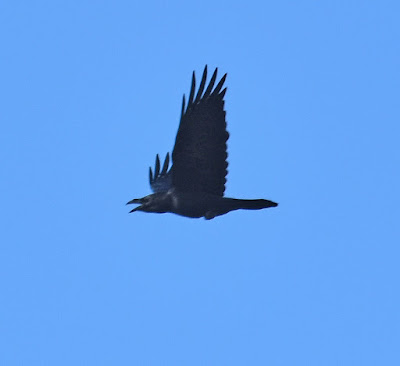 |
| "prince"! (c) JR |
A cool rainy Saturday gave way to a bright crisp sunny
Sunday once the early wisps of mist had lifted. Dawn on Sunday was exquisite, a
gold and orange splash across the sky. The moor seemed quieter than of late and
the migrant warblers that swelled the mixed feeding flocks have nearly all
departed. These parties are now made of mixed tits with just the occasional
Chiffchaff attached. Robins are now the only birds singing their rather sad
wistful song a perfect accompaniment to the season.
 |
| Early morning Robin and Dunnock (c) Bark |
There are larger flocks of Goldfinches and Linnets along the
bridleway and paths. As we move into winter so the numbers of both these
species will increase, especially the Linnets. If they repeat the pattern of
last winter there will be very large numbers of them, along with Reed Buntings,
beside the path south of the hide where he supplementary feeding will be taking
place again. The Goldfinches with many juveniles amongst them are feeding acrobatically
on the dried up teasels.
 |
| Goldfinches and Teasels |
The Purple Heron or “Prince” as it is referred to by some
Otmoor regulars continues to entertain, frustrate and beguile in equal measure.
There are still birders coming to the moor specially to see it and they are
still having to wait patiently for brief flight views. One Otmoor regular
finally saw it on her fourth visit since it has been here. On Sunday morning it
was a little easier to spot. It was feeding on the southern side of Greenaways
amongst the cattle. There were also four Grey Herons in the same area. As the
grass in the ditches and gullies is still long the birds were hidden most of
the time. It was a case of “up periscope” a head and neck would appear and then
just as rapidly disappear again, there would be a chorus of “…there between the
two ginger cows…. or by the grey cow… or to the left of the last brown cow on
the right…” Every so often we would see the distinctive head of the Purple
Heron before it disappeared, only to reappear in a different spot further along.
I was fortunate to get good close view of it on Saturday morning and I think
that its’ colour has changed subtly it actually does appear more purplish now
and less brown. It could be that it is moulting into a more adult type plumage
before making its migration.
 |
| Normal view of the Purple Heron (c) JR |
Marsh Harriers continue to be ever present and there are at
least four different Kestrels hunting over the moor now. The Kestrels really
seem to agitate the corvids but especially the Jackdaws and from time to time
they will turn on a Kestrel mob handed and chase it across the sky. It happened
on Sunday at least twenty Jackdaws chakking furiously racing after the Kestrel which
was making its characteristic ki..ki..ki call.
 |
| Mobbed Kestrel and cronking Raven (c) Bark |
At least six Stonechats are present on the reserve with
three favouring the blue posts for the electric fence alongside the path to the
first screen, the others out past the hide towards July’s Meadow. Four Redwings
were seen in the Carpark Field on Sunday morning undoubtedly the first of many
to come. The low cloud on Saturday had pushed many migrating Hirundines down.
In the morning there were forty or fifty, mostly Swallows feeding over the
reedbed, but in the afternoon I had a report of well over a hundred House
Martins moving through.
 |
| Shoveller (c) Bark |
Numbers of Teal and Wigeon are creeping up slowly and most
wildfowl are still in various states of eclipse plumage. Ten Cormorants at the
first screen was notable on Sunday morning and at one time they appeared to be
fishing almost collaboratively. The feral Goose flock including the Ross’s
goose and his progeny is rising in numbers all the time, when they decide to
move from one feeding area to another the clamour is enormous as they create
noisy chevrons across the sky.
With the first Redwings in will not be long now before
Fieldfares follow.
 |
| Autumn colours appearing (c) Bark |




No comments:
Post a Comment